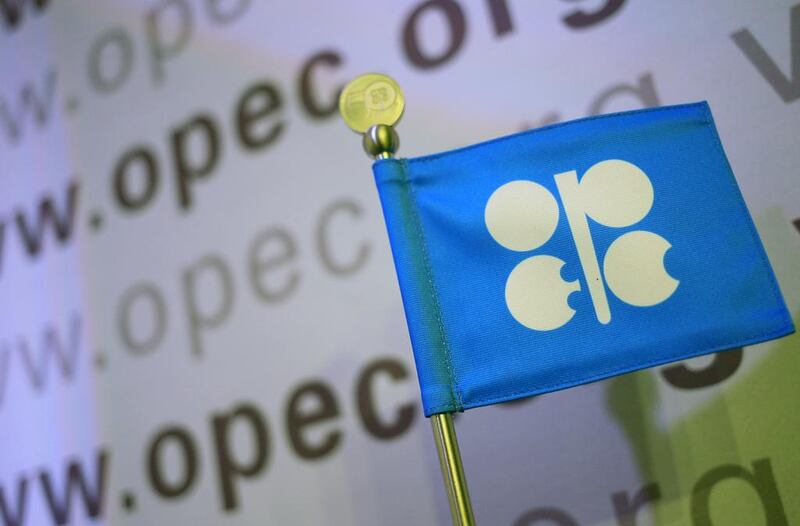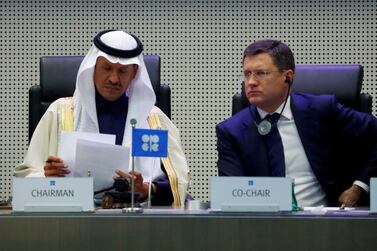Oil demand is set for further downward revisions this month, plunging 5.19 million barrels per day year-on-year, Opec forecast in its monthly market outlook, even as its members begin implementing their deepest ever output cuts.
The slide is a downward revision of 1.2m bpd from the previous month's estimation, the report said. It justified further revision of demand, citing "bleak indications" for the transportation sector in the Organisation for Economic Cooperation and Development countries.
"The Covid-19 outbreak and its downward impact on transportation and industrial fuels was reassessed and is now assumed to further deepen [year-on-year] oil demand losses," Opec said.
Oil demand from non-OECD countries is also set to plunge 3.88m bpd, a further 1.03m bpd downward revision from the previous month's projection.
Opec+ is trimming output by 9.7m bpd in May and June and will keep drawing back supply until 2022. Opec's core Gulf Arab members are, in addition, cutting an extra 2m bpd more than their stipulated quotas.
On Tuesday, Saudi Arabia, which leads the alliance with Russia, said it would cut a further million bpd of supply from the markets in June, bringing its total output curbs to 4.8m bpd. Production for the month of June for the world's largest oil exporter is expected to average 7.492m bpd.
Kuwait will also cut an additional 80,000 bpd, while the UAE is committed to further reductions of 100,000 bpd.
Opec's second-largest producer Iraq, which has traditionally shirked from slashing production, pledged to cut 300,000 bpd bringing its total restrictions to just under 700,000 bpd.
The group of oil producing countries also expects global upstream exploration capital expenditure to fall 23 per cent in 2020, almost half the levels seen during the price crash that began in 2014, the report added.
Saudi Arabia and Russia on Wednesday reiterated their commitment to maintaining oil market stability as demand remains constrained amid the economic fallout from the pandemic.







